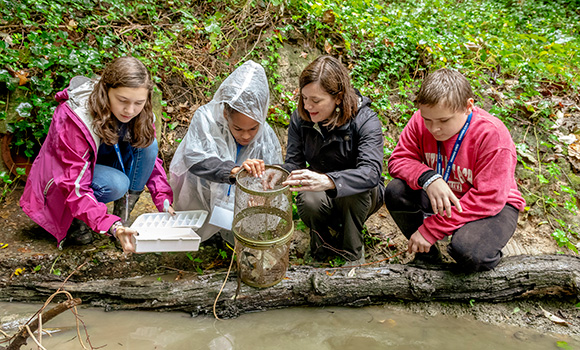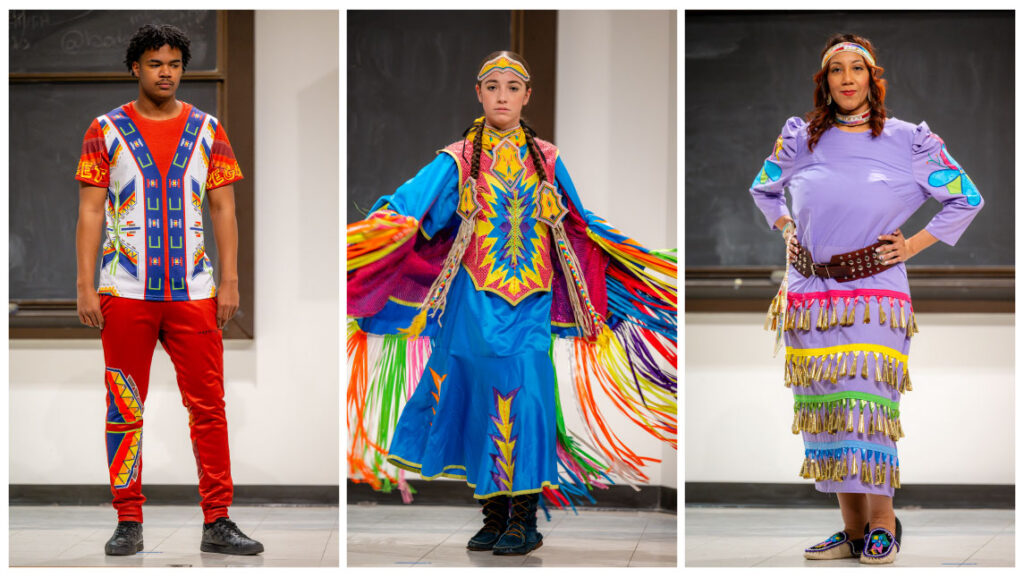The post below originally appeared in UNCG Research Magazine as part of a larger story on the UNCG Wetlands. To read more and to view additional images, visit researchmagazine.uncg.edu.
In two separate, quiet corners of UNCG’s Peabody Park there lies exquisitely fertile terrain – for wildlife, for native plants, and for research. The work that takes place there spans from water quality to mammal diversity to STEM education to recreational therapy.
Wetlands are among the most productive ecosystems in the world. They provide numerous environmental services, raising runoff water quality and increasing biotic diversity. And when used as living laboratories, wetlands are also extremely productive academic ecosystems.
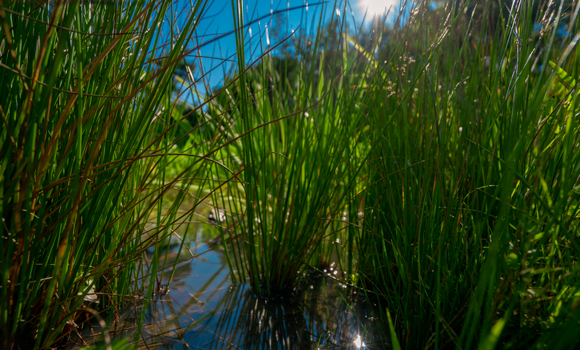
UNCG’s two wetlands, created in 2017, have quickly become a nexus of research and learning, for the university community and beyond.
Peabody Park dates back to 1901, when the first university president Charles Duncan McIver established it as a place for recreation and hands-on learning for students. Part of the park held a man-made lake, which was drained in 1954.
Sixty years later, Dr. Lynn Sametz – co-director of the UNCG Research and Instruction in STEM Education Network – took a stroll through the park with John Byrd, who had just led a workshop on campus. Sametz and Byrd were discussing creating a wetland as a living laboratory at a nearby high school, and then it occurred to Sametz: Why don’t we have them here?
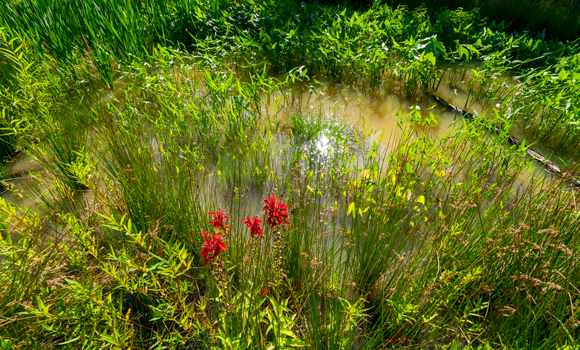
The idea of wetlands on campus caught on quickly. The next year, in 2015, the Wetlands Committee was formed. In March of 2016, Sametz, Associate Professor of Biology Malcolm Schug, and now-Professor Emeritus of Biology Parke Rublee submitted a proposal to Provost Dana Dunn, who approved the project. The committee secured a $46,112 grant from Duke Energy Water Resources, as well as support from the UNCG Green Fund.
The following March, internationally renowned wetlands restoration expert Tom Biebighauser led a two-day workshop for more than 100 volunteers made up of facilities staff, faculty, students, and community members. They worked together to construct the two wetlands – one in Peabody Park Woods and one in an open area on the recreation field, the same location Sametz and Byrd had identified when they first conceived the idea.
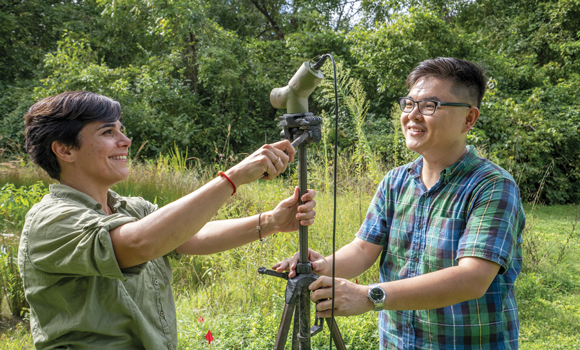
With opportunities for research and teaching in biology, chemistry, environmental studies, recreational therapy, creative writing, and beyond, the construction of the UNCG Wetlands has revived McIver’s original intention for Peabody Park, and spurred new developments across disciplines.
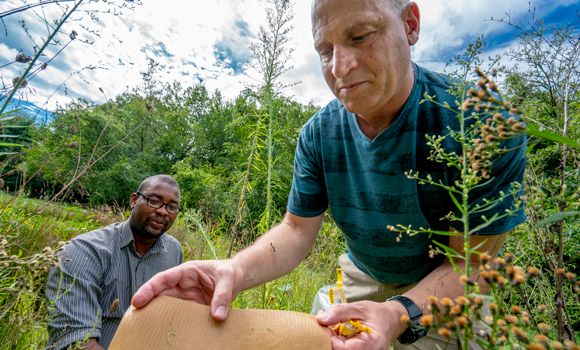
The wetlands play an essential part in implementing the National Science Foundation-funded Council for Undergraduate Research Transformations Project, to develop and expand curricula related to undergraduate, high-impact learning. They are a site for multiple high-stakes research projects in biology, chemistry, and education, and their potential for science outreach activities grows daily as more educators from UNCG and across the county learn about them.
“Our goal was to put these wetlands on our campus as a resource, for all our faculty doing any kind of research or teaching,” said Schug. “What we see is that there’s a large variety of interested parties.”
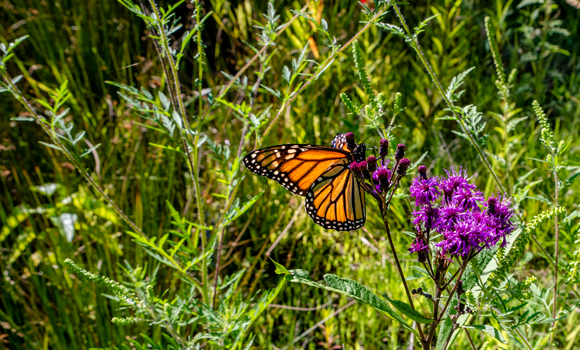
Story by Susan Kirby-Smith, University Communications
Photography by Martin W. Kane, University Communications
